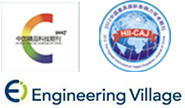Abstract:
In recent years, environmentally friendly green solvents have become an important research direction in green chemistry. As a new type of green solvent with certain degradability, good biocompatibility and relatively environmental protection, the deep eutectic solvent has preliminarily shown its strong development potential in the preparation and functional modification of nanocellulose. This paper mainly reviews the basic properties and formation mechanism of the deep eutectic solvent, and introduces the application of different deep eutectic solvent in the preparation and functional modification of nanocellulose, so as to achieve efficient preparation and modification of nanocellulose. In the future, the designability of the deep eutectic solvent can be brought into full play through the combination of experiment and computational simulation technology and reveal the law of its dissolution, degradation and functionalization in the preparation of nanocellulose, so as to provide references for the preparation and modification of the pretreatment of the deep eutectic solvent and promote its large-scale application in biomass pretreatment.


 下载:
下载: